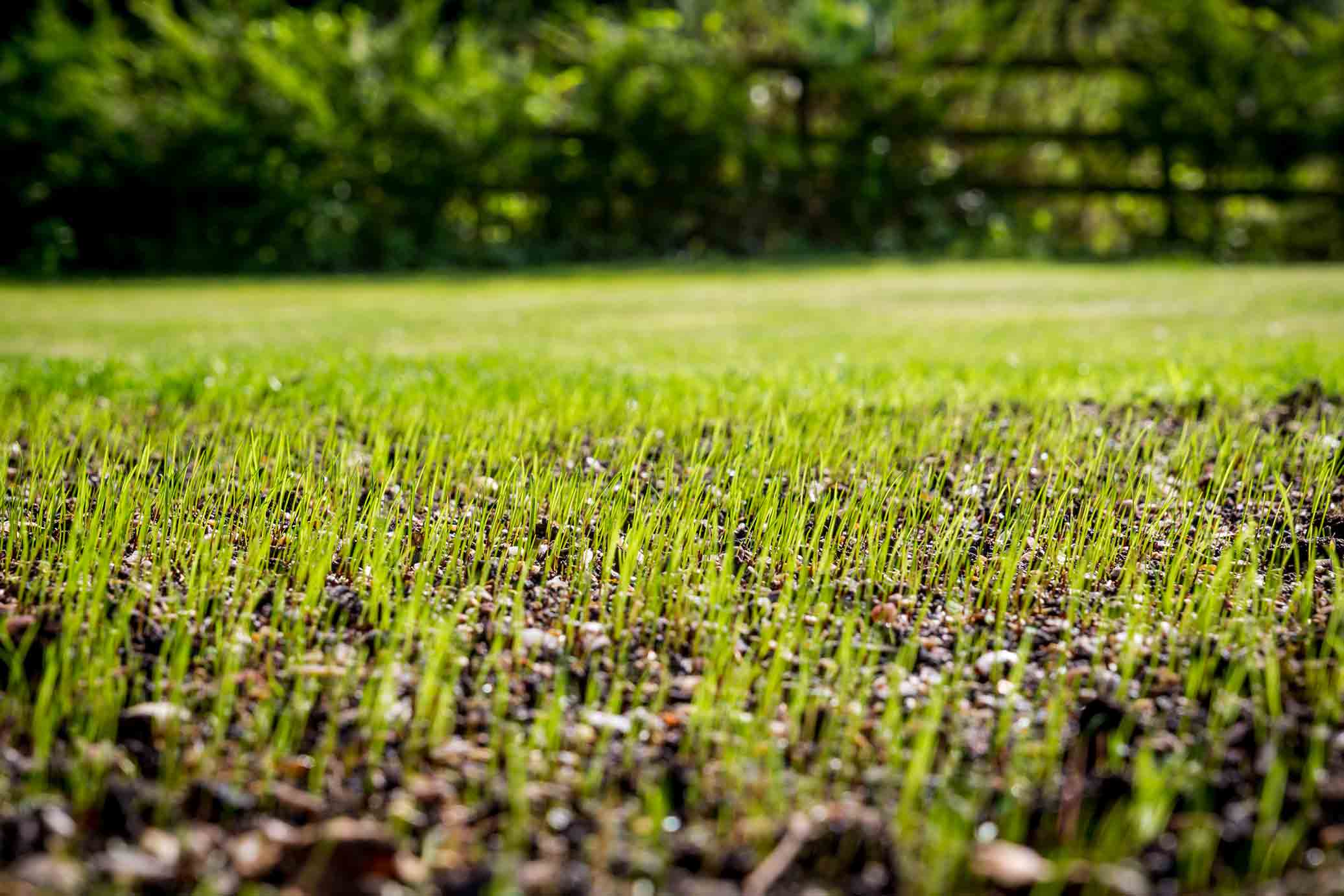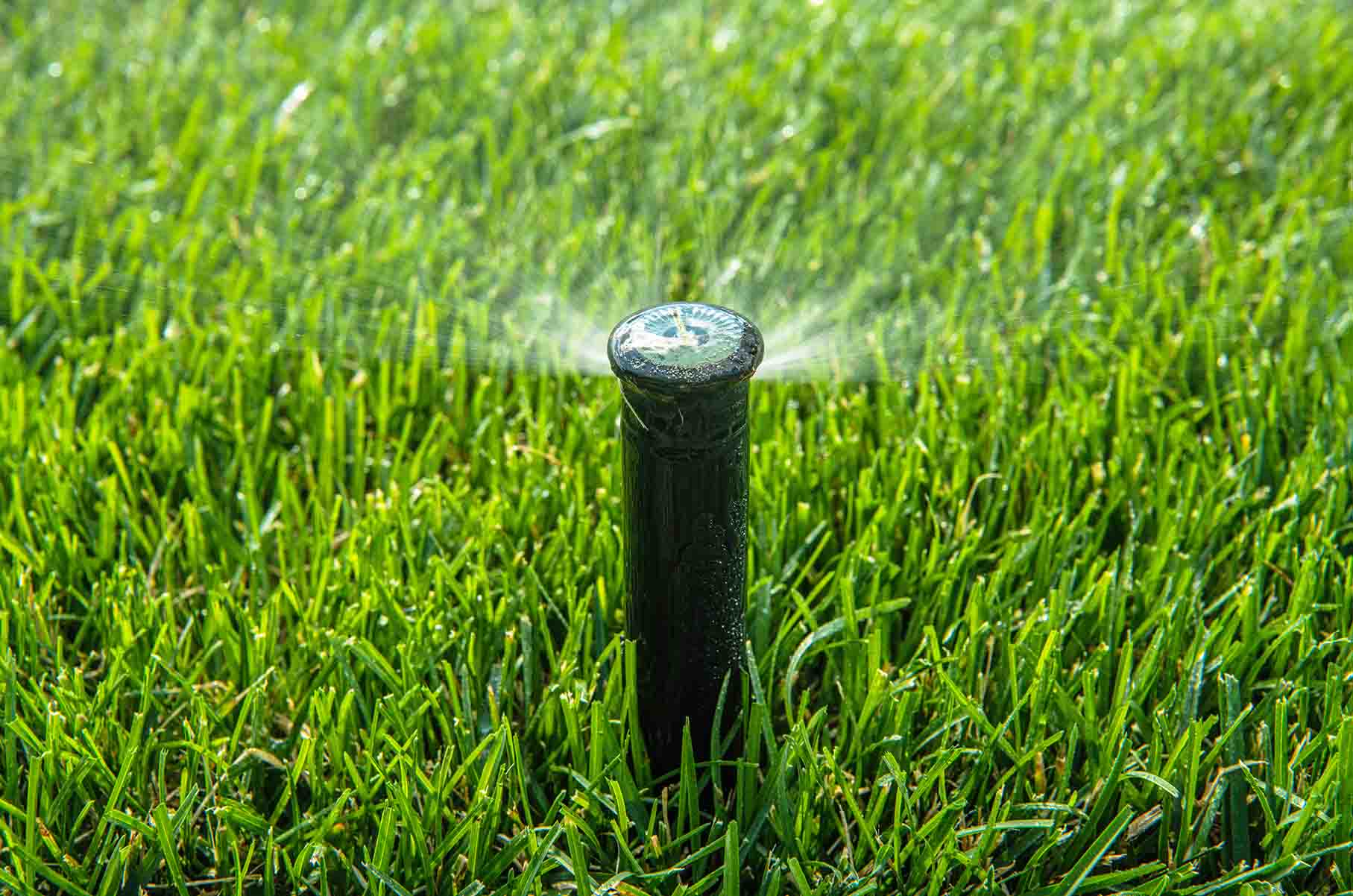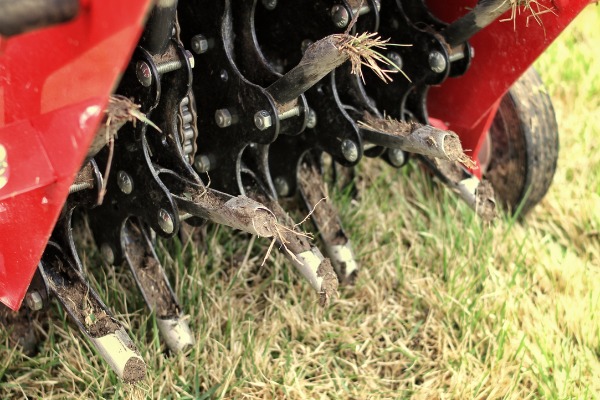Last Updated:
October 28, 2025
Tall fescue is one of the most adaptable and attractive grass types for Utah lawns. It stands out for its deep green color, strong root system, and tolerance to heat and drought once established. However, Utah’s unique mix of dry air, fluctuating temperatures, and varying soil conditions can make lawn care a bit of a challenge if you don’t understand what this grass needs to thrive.
If you’re seeding a new lawn or maintaining an existing one, caring for tall fescue properly will help you achieve the lawn of your dreams. Keep reading for the best lawn care tips for your tall fescue lawn.

Tall fescue is a cool-season grass known for its coarse blades and deep roots, which can reach up to three feet below the soil surface when conditions are favorable. This deep rooting makes it more drought-tolerant than most other cool-season grasses, a major advantage in Utah’s arid climate. It performs best during the mild spring and fall seasons when temperatures stay between 60°F and 75°F but can handle Utah’s summer heat better than bluegrass or ryegrass once established.
The biggest challenge for tall fescue in Utah isn’t the heat itself but the combination of heat and low humidity. Hot, dry air can stress the grass, particularly if irrigation is inconsistent or the soil becomes compacted. Understanding how to balance water, mowing, and soil health throughout the year is key to maintaining a thriving lawn.


Establishing tall fescue successfully begins with timing and preparation. In Utah, the best time to seed tall fescue is in early fall, usually between mid-August and mid-September, when soil temperatures are still warm but air temperatures begin to cool. Fall seeding allows the grass to develop a strong root system before winter dormancy sets in. Spring is the second-best option, though new seedlings may struggle as summer heat arrives.
Before planting, loosen compacted soil with aeration or tilling and amend it with compost if your soil is high in clay or low in organic matter, as is common in Utah. Tall fescue thrives in slightly acidic to neutral soil (pH 6.0–7.0), so testing your soil can help determine whether lime or sulfur is needed for balance.

Utah’s dry climate requires a thoughtful watering approach. While tall fescue has good drought tolerance, it still needs regular irrigation to stay lush and green through the summer. The key is deep, infrequent watering rather than light, frequent sprinkling. Deep watering encourages roots to grow downward, improving the lawn’s ability to withstand dry periods.
Aim to water deeply about two to three times per week during the growing season, depending on local watering restrictions and rainfall. The goal is to moisten the soil to a depth of 6–8 inches each time. Early morning watering between 4:00 a.m. and 9:00 a.m. is best, as it minimizes evaporation and disease risk.
During drought or extreme heat, it’s okay to allow the lawn to go dormant temporarily. Tall fescue can survive several weeks of dormancy without dying, provided the roots don’t completely dry out. Just provide occasional deep watering to keep the roots alive until cooler weather returns.

Mowing height is one of the most important aspects of tall fescue care in Utah. This grass performs best when kept on the taller side, typically between 3 to 4 inches. Taller grass blades shade the soil, helping to conserve moisture, reduce weed pressure, and protect roots from intense sunlight.
Here are a few key mowing tips:

Tall fescue benefits from a balanced fertilizer program, particularly since Utah soils are often low in nitrogen and organic matter. Fertilizer supports vibrant color, dense growth, and strong roots, but timing and moderation are essential.
Apply nitrogen-rich fertilizer in early spring and again in late fall for best results. Avoid heavy fertilization in the heat of summer, which can stress the grass. Many homeowners in Utah prefer slow-release fertilizers to provide steady nutrients over time rather than quick bursts that promote excessive top growth.
A good annual fertilization schedule might look like this:

Utah’s clay-heavy soils often become compacted over time, which can restrict root growth and reduce water absorption. Annual or biannual core aeration is one of the best maintenance practices for tall fescue lawns. Aeration loosens the soil, improves oxygen flow, and allows water and nutrients to reach the roots more effectively.
The best time to aerate tall fescue is in early fall or late spring, when the grass is actively growing and can recover quickly. Combining aeration with overseeding helps fill in thin spots and maintain a dense turf that resists weeds and erosion.

A healthy tall fescue lawn naturally resists many pests and weeds, but Utah’s environment still presents challenges. Crabgrass, dandelions, and thistle are among the most common weeds. A pre-emergent herbicide in early spring can help prevent annual weeds, while spot treatments with selective herbicides work well for broadleaf weeds.
Insects such as billbugs or sod webworms can occasionally damage tall fescue lawns. If you notice thinning patches or chewed blades, inspect for signs of larvae or grubs. Maintaining proper mowing height, watering deeply, and aerating the soil all help minimize pest problems by keeping the turf vigorous.
Fungal diseases like brown patch can appear during warm, humid spells, especially if the lawn is overwatered or the soil stays soggy. To reduce disease risk:
Tall fescue is one of the best lawn choices for Utah homeowners seeking a blend of durability, beauty, and drought tolerance. With its deep roots and rich color, it can thrive even in challenging conditions when it is maintained properly.
If you are looking for professional help growing and caring for your tall fescue lawn in the Salt Lake City area, Holmes is here to help! Call us today for a free quote on the best lawn care in town!
How To Care For Kentucky Bluegrass In Utah Lawns
Kentucky bluegrass is beloved as one of the most beautiful and comfortable turf types available. Come learn how to maintain this grass in your Utah lawn.
Learn MoreHow To Care For Perennial Ryegrass In Utah Lawns
This post explores why perennial ryegrass is perfect for Utah homeowners who want a resilient lawn that looks great!
Learn MoreHow To Care For Tall Fescue In Utah Lawns
This blog post explores what makes tall fescue one of the most popular grass types in Utah, and what steps you can take to maintain a tall fescue lawn.
Learn More